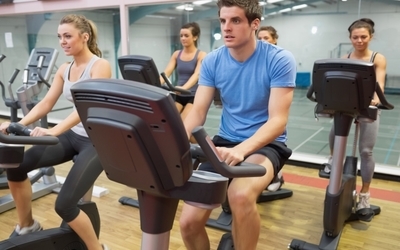If you’ve ever mentioned to a friend that you wanted to lose weight, the chances are that they’ve tried to drag you along to a spin class. Maybe you’re even one of those fitness fanatics that are addicted to the act of indoor cycling, booking back-to-back classes to get your weekly fix (yes, people can – and do – do that). While it’s hard to get yourself motivated for such a vigorous workout, you can see why people do it; it gets results. Spin classes help you to torch calories, shredding about 400 to 600 in the space of 45 minutes. But, if indoor-cycling is so beneficial to your wellbeing, why are some spinsters cutting down, or cutting it out completely?
The first thing to remember with spin classes is that their effectiveness depend on the kind of body you already have; pear shapes may find that indoor-cycling doesn’t give you the body you want. According to celebrity trainer David Kirsch, ‘If you have a predisposition to bulking in your lower half, Spinning can make your butt and quads bigger.’ Rebecca Battista, an associate professor of exercise science at Appalachian State University, adds, ‘Those are the muscles you’re using. Some cyclists get really big thighs.’
If you’re thinking that the recent trend of aqua cycling, in which you bike in the pool, can minimise that thigh-impact, think again. James Pivarnik, a professor of kinesiology at Michigan State University, comments it’s too soon to tell. However, that’s not to say that these wellness experts are anti-spinning. Still, Kirsch rations his clients’ classes, letting an apple-shaped woman with skinny legs, for example, go once a week, but forbidding fashion models to ride at all. Michael Ciardulli Jr., the bodyworker of choice for New York’s A-listers, is another expert who warns clients against indoor-cycling, as he notes that ‘To be lean, you need to lengthen the musculature; cycling can shorten it.’
It’s not just the experts that are concerned about the impacts of indoor-cycling, but the spinning enthusiasts themselves. Take Sarah (not her real name), a 30-year-old publicist who used to love running until she fell head over heels for indoor cycling. However, this budding romance quickly fell flat when Sarah realised that, after a few months, ‘my butt felt and looked padded and my legs felt heavy.’ Sarah had to give up spinning classes and all kinds of exercise for a month in order to let her muscles atrophy. Now, she has taken up yoga and enthuses, ‘My lean, shapely runner’s legs are back.’
Then you have Holly (again, not her real name), a 49-year-old who was even an indoor-cycling instructor, loving the exercise so much that she taught eight classes a week. Yet Holly had to give up on her teaching schedule when she noticed that her jeans were getting ‘really tight, uncomfortable in the butt and thighs.’ In Holly’s case, dropping cycling and picking up barre classes and running resulted in a weight loss of 10 pounds, but not everyone agrees that spinning classes are to blame for the bottom-half bulge.
Jennifer Sage, founder of the Indoor Cycling Association, is, as you might expect, still extolling the benefits of spin classes. While Sage allows that results like Sarah’s and Holly’s aren’t exactly surprising, she is adamant that these are two cases in a whole wealth of other, more positive stories. ‘Very few people will get larger legs,’ from cycling, says Sage, adding that, if they do, ‘they could probably stand to lose a little bit of the body fat on top.’ Ouch. Pivarnik is less harsh in his explanation: ‘Not everybody responds to the same exercise stimuli the same way.’ So, I guess you have to just try it for yourself, and see if indoor-cycling works for you.
